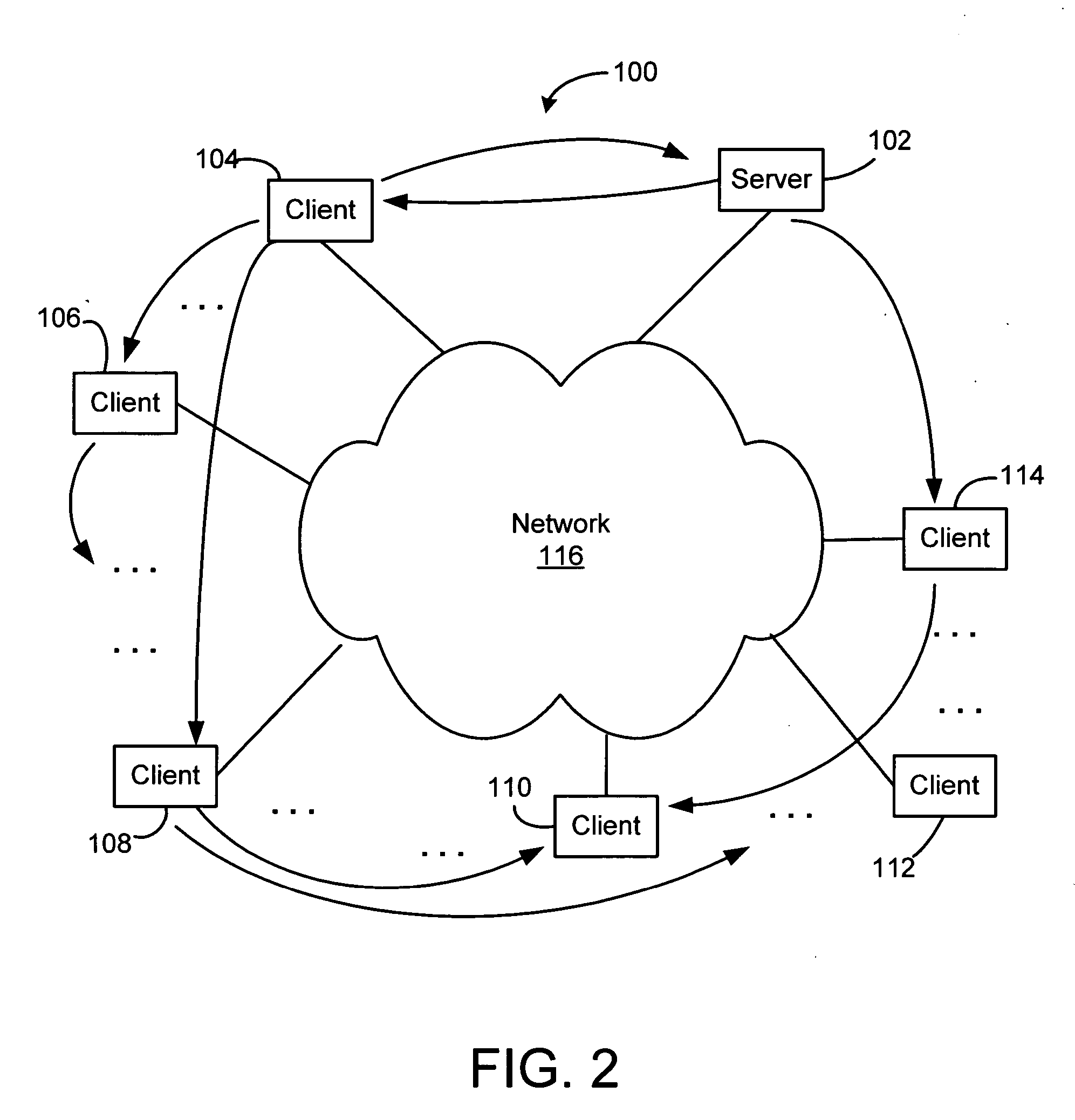Methods and systems for streaming data
a technology of streaming data and methods, applied in the field of methods and systems, can solve the problems of inability to meet bandwidth heterogeneity, inability to adapt to bandwidth diversity, and tend to waste bandwidth on links, and achieve the effect of minimizing the impact on descendant nodes
- Summary
- Abstract
- Description
- Claims
- Application Information
AI Technical Summary
Benefits of technology
Problems solved by technology
Method used
Image
Examples
Embodiment Construction
[0017] The present description discloses a technique for controlling congestion and streaming data among a plurality of nodes divided into a plurality of distribution trees within a computer network, wherein the data is prioritized into a plurality of layers from a most important layer to a least important layer. In particular, when a node experiences packet loss, the location of the congestion is inferred (whether the congestion is near the node's incoming link or outgoing link). If the congestion is at or near the outgoing link of a congested node (e.g., the node is congested as a parent node), outgoing traffic is shed to alleviate the congestion by shedding child node(s) receiving a description in a least important layer of data among the layers that the node is sending. Similarly, if the congestion is at or near the incoming link of the congested node (e.g., the node is congested as a child node), incoming traffic is shed by shedding parent nodes that are sending a least importa...
PUM
 Login to View More
Login to View More Abstract
Description
Claims
Application Information
 Login to View More
Login to View More - R&D
- Intellectual Property
- Life Sciences
- Materials
- Tech Scout
- Unparalleled Data Quality
- Higher Quality Content
- 60% Fewer Hallucinations
Browse by: Latest US Patents, China's latest patents, Technical Efficacy Thesaurus, Application Domain, Technology Topic, Popular Technical Reports.
© 2025 PatSnap. All rights reserved.Legal|Privacy policy|Modern Slavery Act Transparency Statement|Sitemap|About US| Contact US: help@patsnap.com



